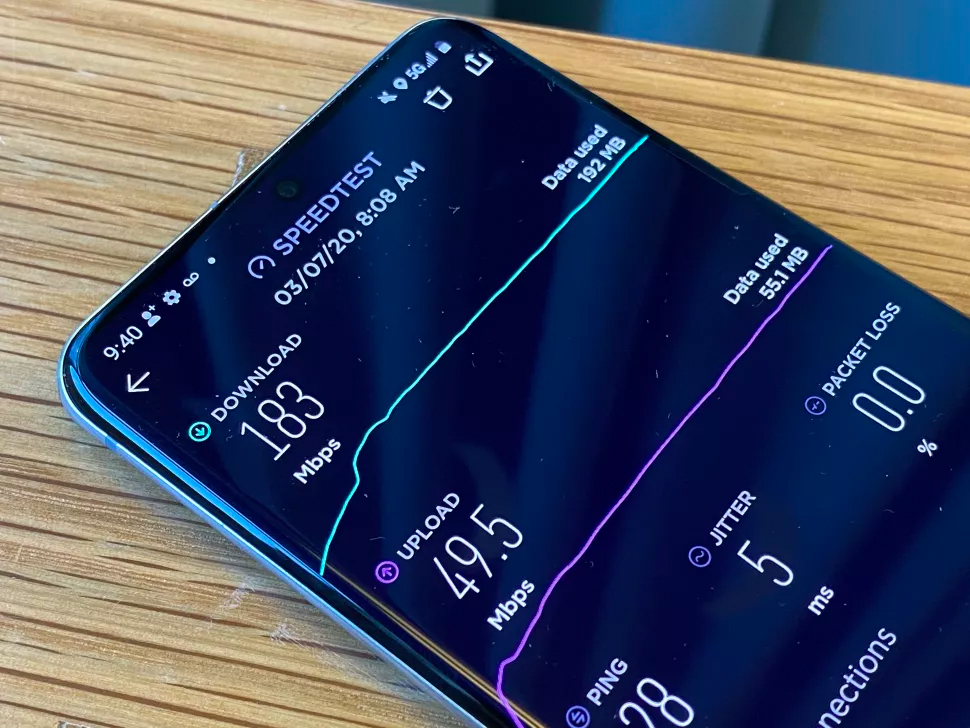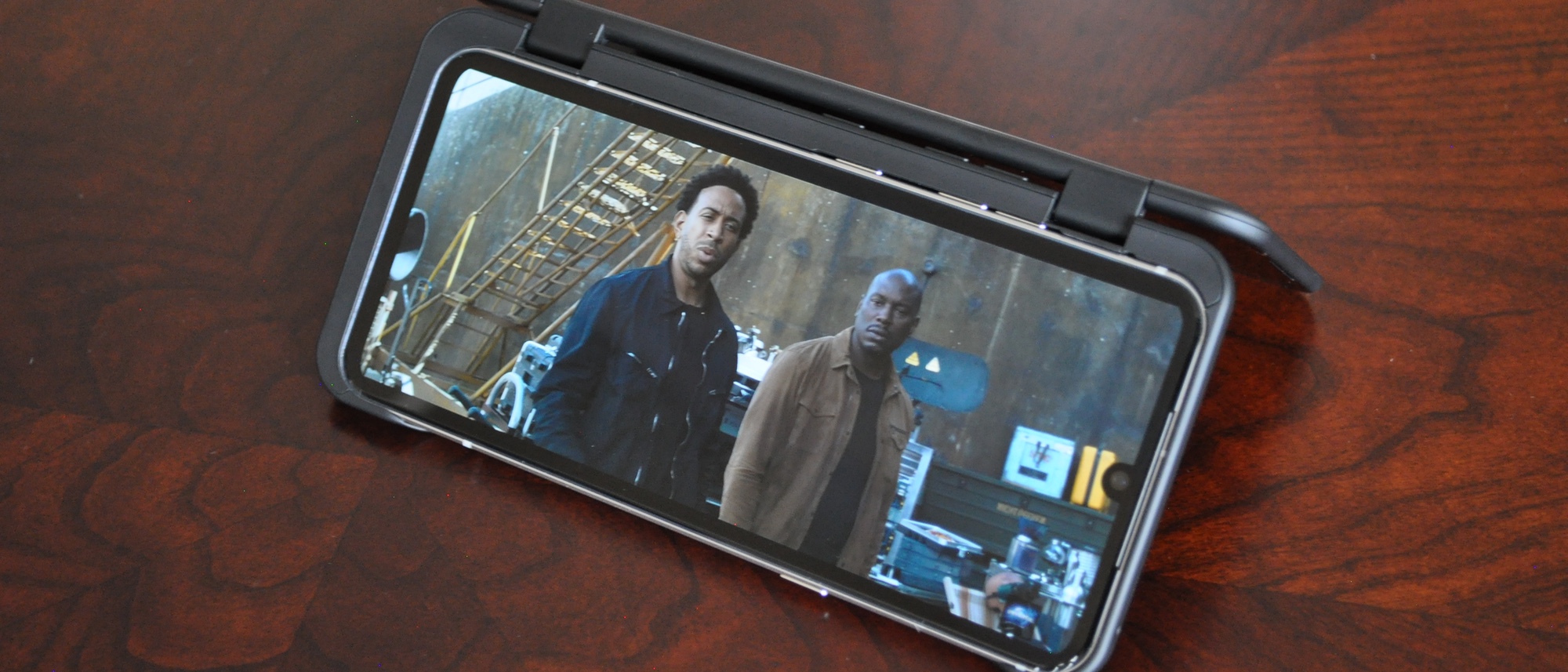Will your 5G phone be future-proof? What you need to know
5G phones are now affordable, but should you get one now or wait?

After years of being just around the corner, 5G has started to actually arrive, with networks expanding from testbed areas and into full rollouts. And that means 5G-ready phones have arrived as well.
While the 5G rollout is still in its infancy in many nations, phone makers have stepped up the pace of releasing handsets capable of connecting with the emerging wireless network. These days, most flagship phones — including the Samsung Galaxy S20, OnePlus 8 Pro, and Samsung Galaxy Note 20 — come with 5G connectivity. And there are now affordable 5G phones as well, notably in the form of the OnePlus Nord.
- What is 5G? The definitive guide to the 5G network rollout
- The best 5G phones you can currently buy
- Plus: Samsung Galaxy S21 may skip one of iPhone 12's key camera features
One of the biggest 5G releases of the year is still to come. Apple is expected to unveil its iPhone 12 lineup in the fall, and all four models rumored to be in the works will likely offer 5G connectivity.
Still, not every big release these days offers 5G connectivity — the Google Pixel 4a doesn't, nor does the iPhone SE 2020 — and coverage in nations like the U.K. is patchy. So it's a valid question to wonder if 5G phones are worth getting now and whether they’ll be future-proof. And that, dear reader, is something we’ll try to answer.
5G phones making waves
Conventional wisdom would dictate to get the best phone you can afford if you want a handset that will last you a while. There are now stats that indicate people are keeping holding onto their phones for up to three years.
With 5G rollouts increasing in pace, there's a good chance you could be in an area that has some form of 5G connectivity in the next couple of years. So if you plan to buy a phone in the next six months, it's worth considering having a 5G capable handset.
Even if you don't plan to hold onto your phone for that long you might wonder if it's better to have the option of 5G than not? Well, sort of. The problem is that 5G networks can effectively be divided into two specific areas; sub-6GHz and millimeter wave (mmWave). The former can cover wide areas and is the most prolific segment of spectrum used to power 5G networks, while the latter offers faster download speeds but is limited in range as it needs a lot of base stations and antennas to create a network that’s not blocked by buildings or other obstacles.
Sign up to get the BEST of Tom's Guide direct to your inbox.
Get instant access to breaking news, the hottest reviews, great deals and helpful tips.

There’s a lot of theoretical speeds touted for 5G across the board. But real-world testing has shown that we can’t get the theoretical top speed of 10Gbps, though various data and tests show that 5G is significantly faster than 4G.
Where it’s available, mmWave offers the fastest 5G connection. In our testing we found speeds topped 1Gbps, which is a far-cry away from the top theoretical speeds, but still blisteringly quick compared to 4G in real-world use.
However, not all 5G phones have the antennas needed to support mmWave; a lot of devices only work with sub-6 networks. Some phones support both networks, but these tend to be expensive flagship devices; the OnePlus Nord, for example, doesn’t support mmWave. And while the iPhone 12 will have 5G, only the 'Pro' models are expected to support both sub-6 and mmWave.
And even if you were to get a phone with the best 5G connectivity on offer, you’ll probably struggle to find a mmWave network since that kind of coverage is sparse: you won’t find a mmWave network in the UK, for example. In the US, only Verizon has built its initial 5G network using mmWave; T-Mobile and AT&T have some mmWave towers, but those are limited compared to their nationwide networks.
That’s not necessarily a big deal, as Avi Greengart, lead analyst at Techsponential, told Tom’s Guide that sub-6 will be the most important 5G network in the near future.
“For most people in urban and suburban areas, 5G’s biggest impact will be on mid-band (‘sub-6GHz’) networks that offer significant improvement in speeds along with excellent coverage outdoors and good coverage indoors,” Greengart explained. “mmWave 5G performance can be spectacular, but it is expensive to deploy because the signals don’t travel far, making it best suitable for specific spots in crowded urban areas and venues like sports stadiums.”
A spectrum of spectrum
Essentially, mmWave 5G isn’t going to be something you can take advantage of even if you have a compatible phone. At least not in the near-future as mmWave networks aren't likely to span nations in the same way as sub-6 networks.
Rather mmWave is wil likely be constrained to urban areas and used as a high-speed urban network for facilitating emergency services communication and enabling the fast and high bandwidth connections for things like driverless cars when they become a fully-realized reality of city transport.
Even if mmWave networks are expanded beyond the concrete jungles of the likes of New Yor City and London, you shouldn't wait for them to arrive. That's because it'll be a combination of different spectrum bands will be what makes up consumer-grade 5G networks for the foreseeable future. This means even if you have a sub-6 compatible phone you won’t find yourself left behind as 5G evolves, much like 3G networks still exist alongside 4G ones.

“The future of 5G is a combination of low-band, mid-band, and mmWave frequencies, all on standalone 5G networks. Some 5G phones purchased today will work on those future networks with just a software update, but that future is still years away,” said Greengart.
But Greengart suggests it would be shrewd for people considering a 5G phone to take a moment to understand what the state of 5G will be over the lifetime of their next handset: “Implementation also varies wildly from country to country, carrier to carrier within the country, region by region, and, in some cases, block by block. That makes it important for consumers buying a phone today to understand what technologies their carrier is likely to implement in their area over the next 2 to 3 years that they have that phone.”
In the U.S., mmWave networks are further along in their deployment than in the U.K., but like Greengart, Ben Wood, chief of research at tech analyst house CCS Insight, noted that a lack of mmWave shouldn't be a concern when it comes to getting a 5G phone.
“Although it’s true that the vast majority of 5G phone available today only support 5G at sub-6GHz, we believe this will be sufficient for the vast majority of users in the UK,” said Wood. “We believe mmWave technology will arrive in the UK within the next two years, but we don’t expect widespread deployment given the small cell footprint and resistance to the technology based on unfounded health concerns.”
“That said, we do think in the mid- to long-term mmWave will play a very important role as part of all 5G deployments, but for someone buying a phone today that’s unlikely to be a major consideration.”
To 5G or not to 5G?
With the above in mind, you might be thinking that a 5G phone isn’t necessary if you’re only going to get sub-6 speeds, connectivity in limited areas, and might not plan on keeping your phone for that long.
As the first telecoms provider to begin its 5G rollout in the U.K., EE is bound to champion the move to 5G. But David Salam, director of Mobile networks at EE, did note that 5G's rollout is accelerating and with that, comes more advantages to early adopters.

“EE currently has 5G in 80 large towns and cities, and we’re expanding our footprint every day. Customers using our 5G network on a 5G device in those places are already enjoying the faster speeds and lower latency of 5G,” said Salam. “We’ve seen some really exciting use cases within just the first year of EE’s 5G network being switched on, from the world’s first augmented reality gig streamed simultaneously over 5G to three cities, to a remote-controlled ultrasound scan.”
So there’s scope for 5G to bring advantages over 4G even if various services have yet to tap into them. As it currently stands, 5G connectivity should enable you to stream Netflix content at 4K and download large files and other things at breakneck speeds across a cellular connection. How much of an advantage you’d find that to be over 4G — which on a good network can offer speedy connections — is down to how you use your smartphone, and indeed how you plan to use your smartphone in the future.
If you’d be interested uploading full-resolution photos snapped in RAW format on a Galaxy S20 Ultra for example, or wish to tap into Xbox game streaming thanks to Project Cloud becoming part of Xbox Game Pass Ultimate and coming to Android, then 5G could be a boon.
But it doesn't really matter how you can use 5G connectivity in the here-and-now. Rather you'll want to know if buying a 5G phone now or in the next few months means you'll have a phone that will be ready for what 5G has to offer in the next two to three years or end up with a handset that'll be obsolete in 12 months.
“Given most people now keep their mobile phone for three or four years it increasingly makes sense to buy a 5G-capable device,” Wood told us. “A good analogy is with TVs. A decade or so ago it would have been foolish to buy a TV that was not HD-Ready, even if you did not have access to HD content.
“We believe the same argument applies to 5G. Furthermore, with the introduction of 5G capable iPhones later in the year, awareness amongst consumers will be extremely high and it will make it harder than ever to sell a premium smartphone that does not have 5G.”
With all the above taken into consideration, it looks like you can’t really lose if you get a 5G phone right now. Even if you don’t use the so-called next-generation connectivity, you’ll have a phone that’s ready for it.
So if you're in the market for a new phone, such as the upcoming iPhone 12 or Google Pixel 5, which you'll want to hold onto until 2023, then you're better off getting one with 5G connectivity. And as 5G network rollouts gather pace more services are likely to tap into them, so being ready to take advantage of them is just plain smart thinking.
Roland Moore-Colyer a Managing Editor at Tom’s Guide with a focus on news, features and opinion articles. He often writes about gaming, phones, laptops and other bits of hardware; he’s also got an interest in cars. When not at his desk Roland can be found wandering around London, often with a look of curiosity on his face.

